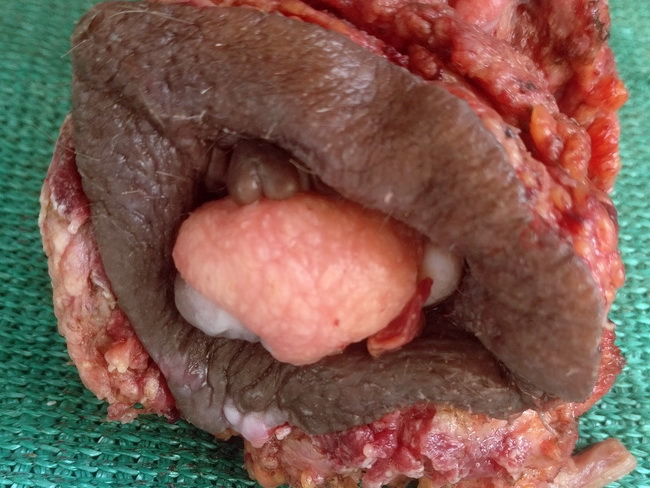Anal Squamous Cell CA : Introduction


Comments:
Introduction: Anal carcinomas account for less than 5% of malignancies of large bowel. Vast majority of them are squamous cell carcinomas (SCC) which include conventional, verrucous, and spindle cell (sarcomatoid) subtypes. Other primary anal malignancies are rarer and include basal cell carcinoma, primary anal adenocarcinoma, Paget disease (primary and secondary), neuroendocrine carcinoma, and malignant melanoma. Pathogenesis: Sexually-transmitted HPV infection plays a major role in the development of anal SCC in 80-90% of cases. Receptive anal intercourse and multiple lifetime sexual partners are major risk factors. The most often implicated HPV genotypes are 16 and 18. Rare cases of anal SCC occur in patients with Crohn disease or immunosuppressive states. Clinical Features: Anal SCC can present with pain, bleeding, pruritus, and a protruding mass. The symptoms often mimic benign conditions such as hemorrhoids which may delay the diagnosis. Case History: 70 y/o man presented with intermittent pain, bleeding, and mass protruding from the anus. The diagnosis of invasive squamous cell carcinoma was established after clinical, radiologic, and biopsy evaluation. He underwent abdominoperineal resection. The specimen shows a 4 cm oval, pink mass with granular surface protruding at the anal verge. On sectioning, there was irregular thickening of the anal wall (see next image) along with ulceration and a polypoid protrusion caused by the tumor. Case courtesy of: Dr. Sanjay D. Deshmukh (Professor of Pathology) and Dr. Ninad J. Gadekar (Consultant Oncosurgeon), Dr. Vithalrao Vikhe Patil Foundation's Medical College & Hospitals, Ahmednagar, India.


